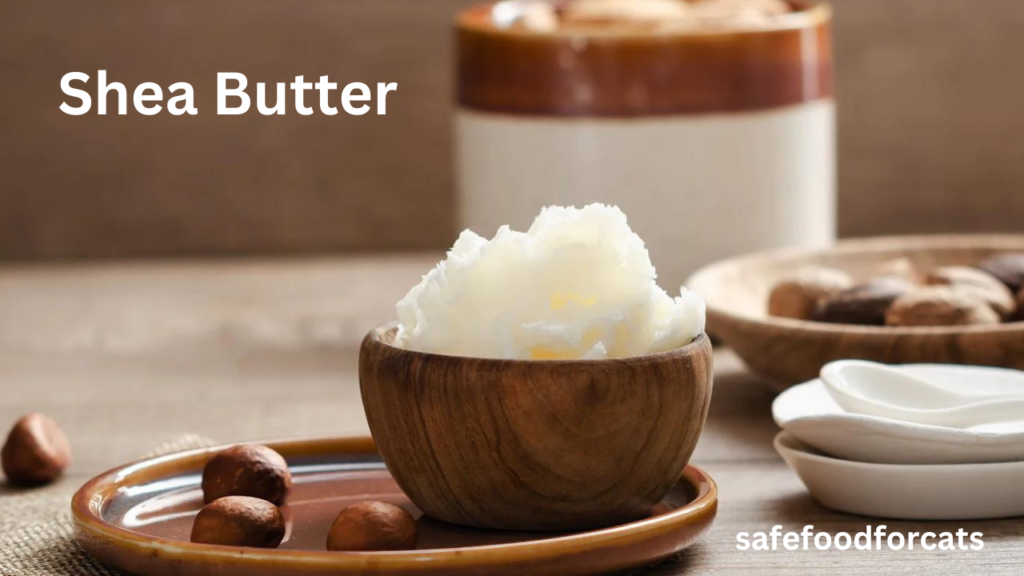Shea Butter for Cats: A Comprehensive Guide to Safety, Benefits, and Proper Use
As a devoted cat owner, you’re likely always on the lookout for safe and effective ways to care for your feline friend. When it comes to addressing skin issues like dryness or irritation, you may have heard about the potential benefits of shea butter. This article aims to provide a comprehensive and detailed exploration of whether shea butter is indeed safe for cats, the potential advantages it offers, and the proper guidelines for its use.
Understanding Shea Butter:
Shea butter, scientifically known as Butyrospermum parkii, is a natural fat derived from the nuts of shea trees, which are indigenous to West Africa. Recognized for its rich composition, shea butter contains an array of fatty acids, vitamins (including E, F, and A), and esters. These constituents contribute to its unique properties, making it an excellent moisturizer and skin-nourishing agent.
Shea butter boasts a solid consistency at room temperature, resembling an ivory or pale white color. Its popularity has surged due to its historical use in cosmetics and skin care, particularly in West African cultures where it’s been valued for centuries for its potential benefits.
Benefits of Shea Butter for Skin:
Shea butter offers a plethora of potential advantages for skin health. While these benefits have been more extensively studied in humans, they may also extend to our feline companions in certain contexts. Some of the potential benefits of shea butter include:
- Moisturization: Shea butter’s exceptional moisturizing properties can help combat dry and flaky skin in both humans and cats. It forms a protective barrier on the skin, helping to retain moisture and promote hydration.
- Anti-Inflammatory: The presence of antioxidants and anti-inflammatory compounds in shea butter may offer relief from skin discomfort, which could be particularly beneficial for cats with conditions like eczema or minor irritations.
- Wound Healing: Shea butter’s potential to support wound healing and skin repair makes it a valuable asset in addressing small cuts, scratches, or minor injuries in cats.
- Emollient: Shea butter’s emollient nature can help soften and soothe the skin, reducing itchiness and discomfort that may arise from dryness or irritations.
- Non-Toxic and Hypoallergenic: Natural and hypoallergenic, shea butter is generally well-tolerated by most cats, making it a potential option for those with sensitive skin.

Is Shea Butter Safe for Cats?
Shea butter is generally considered safe for cats when used correctly and in moderation. Its natural origin and hypoallergenic properties contribute to its safety profile. Many cat owners have successfully utilized shea butter to address dry, itchy skin and provide relief from flea bites. The antioxidants present in shea butter may aid in reducing inflammation and promoting skin comfort.
However, it’s important to exercise caution and take certain precautions:
- Patch Test: Before applying shea butter to a larger area, perform a patch test on a small, inconspicuous spot on your cat’s skin. This helps determine if there’s any adverse reaction or sensitivity.
- Pure and Unrefined: Opt for pure and unrefined shea butter without added fragrances, chemicals, or additives that could potentially harm your cat. High-quality, organic shea butter is preferable.
- Watch for Allergies: While rare, some cats may be allergic to shea butter. If you notice any signs of allergic reactions, such as excessive itching, redness, or swelling, discontinue use and consult a veterinarian.
- Avoid Ingestion: To prevent accidental ingestion, avoid applying shea butter to areas near the eyes, nose, or mouth.
Applying Shea Butter to Cats:
Proper application is essential to ensure your cat’s safety and well-being. Follow these steps for responsible shea butter usage:
- Choose High-Quality Shea Butter: Select shea butter that is pure, unrefined, and free from additives. Read product labels carefully and opt for brands with a reputation for quality.
- Patch Test: Take and apply only a small amount on the skin of your cat. Monitor the area for 24 hours for any signs of adverse reactions.
- Limited Application: Use shea butter sparingly and only when necessary. Overusing it may lead to excessive greasiness or discomfort for your cat.
- Massage Gently: Gently massage the shea butter into your cat’s skin, focusing on areas of concern such as dry patches or irritations.
- Monitor for Changes: After applying shea butter, observe your cat’s behavior and the treated area. Contact your vet if any adverse reactions are noted.
- Consult a Veterinarian: Before introducing any new product or treatment to your cat’s skincare routine, consult your veterinarian. Your vet will be able to give you specific instructions while considering your cat’s health and personal history.
Conclusion:
Shea butter, with its potential moisturizing, anti-inflammatory, and wound-healing properties, can be a valuable addition to your cat’s skincare routine. While generally considered safe, responsible usage is paramount. Perform a patch test, opt for high-quality, pure shea butter, and closely monitor your cat for any signs of adverse reactions. Consulting your veterinarian is essential before introducing any new skincare product to your cat’s regimen. By taking these precautions, you can explore the potential benefits of shea butter and promote your cat’s skin health in a safe and informed manner.

